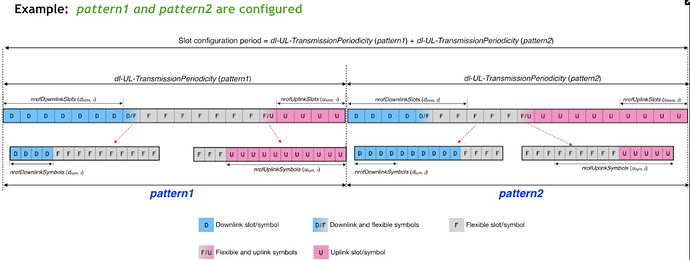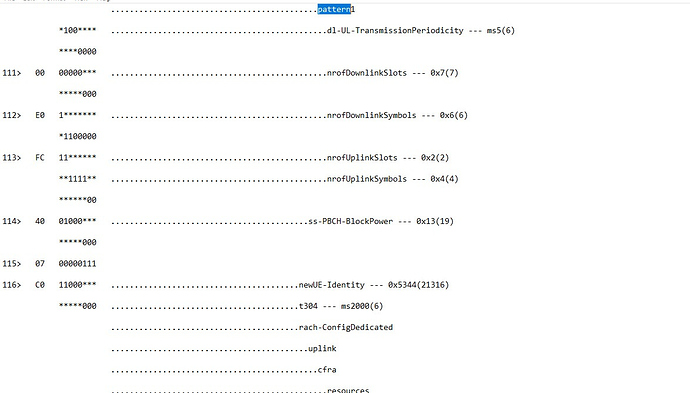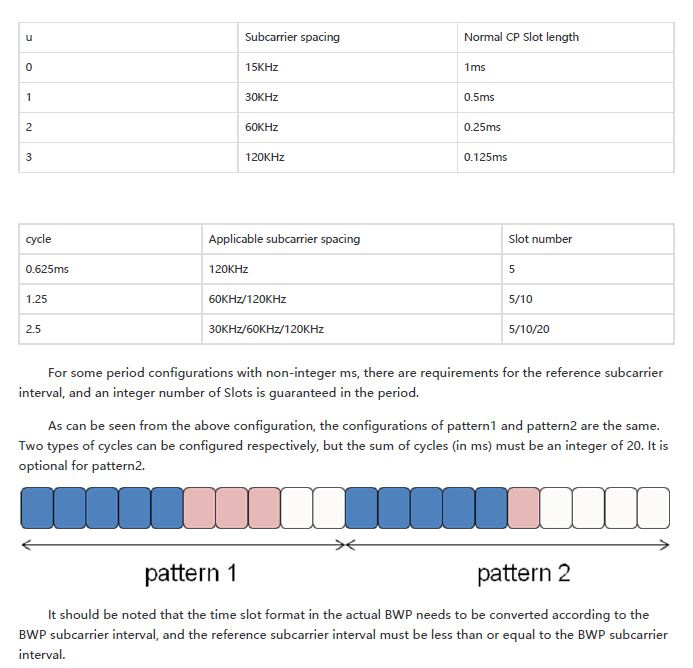As explained/discussed above, pattern 2 gives additional flexibility is scheduling in DL/UL.
In coexistenece with LTE, generaly it may not be used.
@Vicky, is your nw SA or NSA?
NSA. LTE is FDD.
Above TDD pattern information is from NR 3.5.
I was thinking about why such complex structure is choosen for DL/UL configuration.
We did the benchmarking all operator here.
Which using same DL/UL TDD slot pattern.
I think its also 3GPP norm to use same pattern by all operator in a country.
In LTE you had many configurations to choose from.
While in 5G as per standard you fill the frame in the following format:
- DL slots from left to right
- UL slots from right to left
- And flexible slots in the middle
That is why pattern2 is used if you wanted to add some DL slots after the UL to the right.
And not mandatory.
Some operators use only pattern1.
If operator already have existing TDD a sanchor, then effort is to match DL UL configuration with existing TDD.
Thats why i asked about the current conf of NW.
Yes this is another important point to avoid cross link interference.
Existing is FDD, somehow more relax. 
Yes thats why.
But how do we know know when pattern 2 will come into the picture?
Suppose in 30khz the dl-UL-TransmissionPeriodicity is 5 ms(total 10 slot to fill) and I give nrofDownlinkSlots as 2 and nrofUplinkSlots 2 (so total 6 slots left which I am thinking now become flexible).
Does pattern 2 mean I can give 6 DL slot after my last slot in pattern1 also?
If yes, how does the network know that I am not actually leaving 6 flexible slot in the middle of pattern1 and want to provide 6 DL slots in pattern 2?
Yes you understand correctly.
You have specs for pattern1.
And separate specs for pattern2.
Here they have periodicity of 2.5 ms in 30kHz.
So 5 slots which repeat and they have 3 DL, 1 UL and 1F.
So why pattern2 will come into the picture here?
Normally it should be.
Pattern1 pattern2 pattern1 pattern2.
And so on.
I think normally it’s just pattern1, that’s what I see at least.
I haven’t seen pattern2 being used so am just curious under what circumstances pattern2 will also be triggered.
It depends on your configuration.
Here for example only pattern 1 is configured, while in the previous example both patterns are configured.
You have this flexibility.
So if we configure pattern2, it will always be used?
I had a notion that even if both pattern1 and2 are configured, only pattern1 is used and only in certain triggering condition pattern2 will come into effect.
Thanks for explaining  .
.
Hope this help.
pattern 2 is optional (if operator want they can configure totally different from pattern 1), basically it provide more flexibility.
In total 10ms frame: pattern 1 (for 2.5ms) + pattern v2 (for 2.5ms) + pattern 1 (for 2.5ms) + pattern v2 (for 2.5ms).
In my case both pattern 1 and pattern 2 trigger in RRC reconfiguration allways.
Even i also don’t understand what is the triggering point to use pattern 2.
And is 3GPP only defined 2 pattern in case of NR?
As I remember in LTE TDD we have 9 different pattern.


